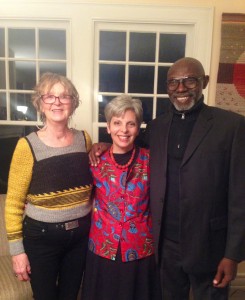 Wendy Bertrand, Diane Chehad, Epee Ellong
Wendy Bertrand, Diane Chehad, Epee Ellonghttp://padoukdesign.com
De La Case A La Villa

This book attempts to answer the African architect’s constant professional dilemma—respecting the concept of “modern African” architecture, whereas Africans do not wish to live in traditional-style huts any longer.
Epée Ellong, with Diane Chehab, follow traditional African architecture through various historical phases to today’s African architecture, so as to highlight contradictions through a societal and technical lens.
The illustrations and images that accompany the text show the construction phases of traditional and contemporary architecture, as well as everyday objects. Many historical and linguistic references are used in order to better explain the changes on both a human and architectural level.
Subjects covered in the book include:
- Historical migrations in Africa
- Traditional architecture in Cameroon
- Colonial architecture
- The consequences of social changes on architecture and construction
- The evolution of housing in Cameroon
- Thoughts on the future of African architecture
Why was this book written? There are few books that explain the relationship between history, colonization, sociology and architecture in Africa.
The authors:
Epée Ellong is a native of Douala, Cameroon. He is an architect trained at the Ecole des Beaux Arts in Paris, France. In 1983, he founded an architectural firm, CAEE, with his spouse, Diane Chehab, an American-born architect. The philosophy behind CAEE was to reincarnate African traditional architecture into modern design. A home whose basic materials are bamboo and palm fronds, and no electricity or running water, can’t be automatically transformed into a contemporary dwelling. Epée drew upon traditional symbolism and masks to “Africanize” CAEE’s architecture. The firm designed projects in Cameroon, Guinea, and Ivory Coast.
CAEE’s projects brought Epee to many parts of Cameroon, where he was familiarized with the country’s ethnic, cultural and geographic diversity. He met many regional traditional chiefs who provided him with the background of the architectural and social upheavals brought on by the arrival of Europeans. Together with these chiefs, he put together a nomenclature of the typological elements of traditional construction.
Epée has been practicing architecture in the United States since 1995. He has also taught Afro-centric architecture within specialized workshops, and speaks at American universities and at the Museum for African Art in New York.
Diane Chehab was born in the United States, lived in several countries and continentbads, and studied architecture at the Lebanese University in Beirut and at the Beaux Arts in Paris, France. She married her colleague, Epée Ellong, and moved to Cameroon to manage their architectural firm. She learned Duala, her spouse’s language, to better understand the culture. She currently shares her time between the United States and Cameroon.
The book is published by Riveneuve Editions, Paris. It can be purchased on Amazon.com in the United States.
The English edition is not out yet, but the French edition is bursting with photos and sketches and one learns, again, the importance of culture in architecture.
